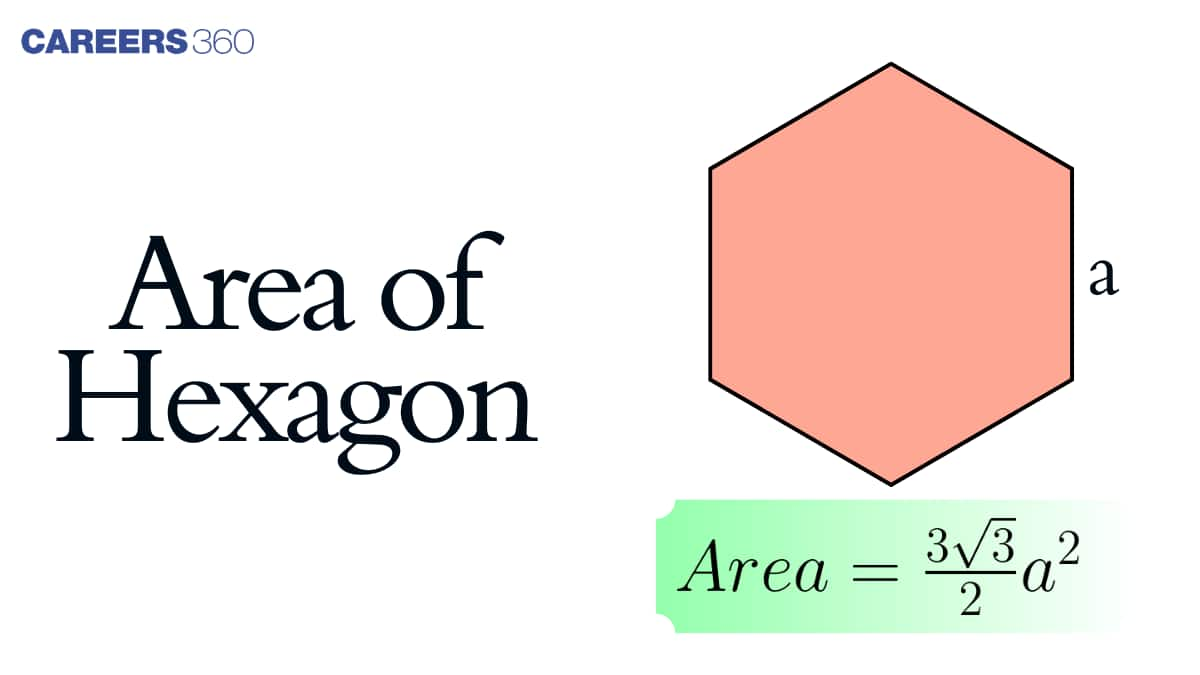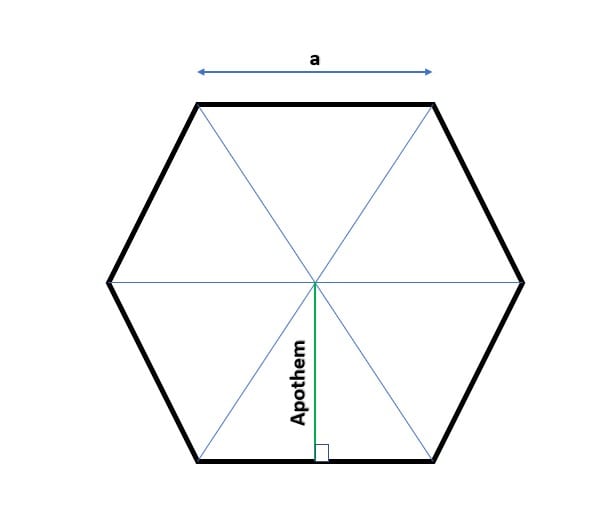Area of Hexagon - Definition, Formula, Derivation and Examples
The portion or the region inside the six sides of the hexagon is called the area of the hexagon. A polygon can be defined as the closed 2-D shape with six sides and six angles. The Hexagon word comes from Greek words "Hexa," which means "six," and "Gona," which means "corner,".
This Story also Contains
- Hexagon
- Area Of Hexagon
- Area Of Hexagon With Apothem

Hexagon
Hexagons are six-sided polygonal shapes. A hexagon is referred to as a regular hexagon if all of its sides are equal and all of its angles are the same. There are a total of 9 diagonals in a hexagon. A normal hexagon has 720 degrees total internal angles. The inner angles are all 120 degrees, as well. The outside angle of a regular hexagon is 60 degrees, while the total exterior angle is 360 degrees.
Area Of Hexagon
Six equilateral triangles make up a regular hexagon, which has six equal sides and six angles. Whether you're dealing with an irregular hexagon or a regular hexagon, there are numerous ways to figure out the area of a hexagon. The area of the hexagon formula can be calculated in a number of ways. There are several ways to compute a hexagon's area, which is stated in square units like $m^{2}, cm^{2}, in^{2}, ft^{2}$, and so on.
The area of a regular hexagon is calculated using the formula $\frac{3\sqrt{3} a^2}{2}$, where a is the length of a hexagonal side. The formula Area of the Hexagon = $\frac{3\sqrt{3} a^2}{2}$, which is the length of the hexagonal side, can be used to determine the area of a regular hexagon when one of its sides is known.
Area Of Hexagon With Apothem
When the side length and the apothem are known, the area of a regular hexagon can be determined. Apothem is the section of line traced from the hexagon's center that is parallel to each hexagonal side.
Area of hexagon = (1/2) × apothem × Perimeter of hexagon.

Frequently Asked Questions (FAQs)
The area of the hexagon is defined as the area enclosed within the sides of the hexagon. The area of a hexagon is expressed in square units like $m^{2}, cm^{2}, in^{2}, ft^{2}$, and so on.
Given, the length of the side of the regular hexagon = 8 units.
We know that, The formula Area of the Hexagon =$\frac{3\sqrt{3} s^2}{2}$, here s is the side of the hexagon
Area of the Hexagon = $\frac{3\sqrt{3} \times 8^2}{2} =166.27$ sq. units
The area of an asymmetric hexagon cannot be calculated using a precise formula. Triangles and rectangles can be used to partition a hexagon into multiple forms. The area of the hexagon can then be computed by adding the areas of these other forms.
A polygon is a straightforward closed curve. A polygon is a closed, two-dimensional shape that is circumscribed by three or more straight lines. Polygons include shapes like triangles, squares, rectangles, pentagons, and hexagons.
The sides of the polygon are the individual segments. Vertices are the places where two segments converge. Adjacent sides refer to segments that have the same vertex. A diagonal is a segment whose endpoints are non-adjacent vertices.